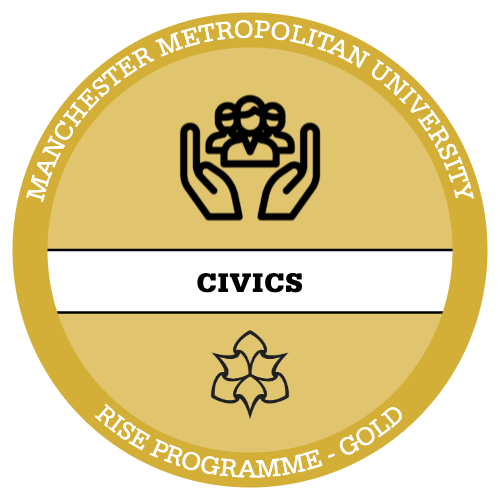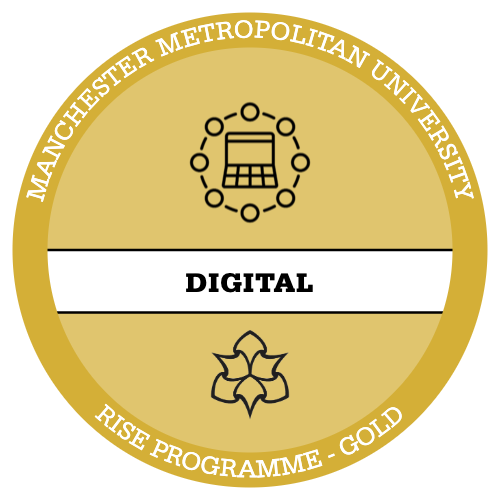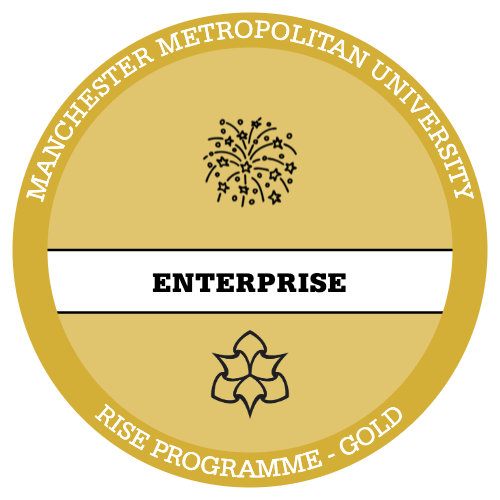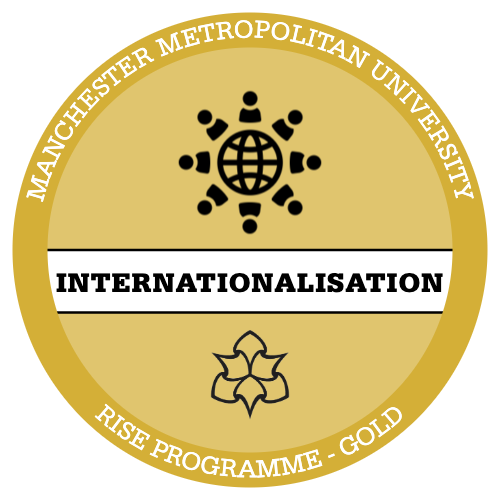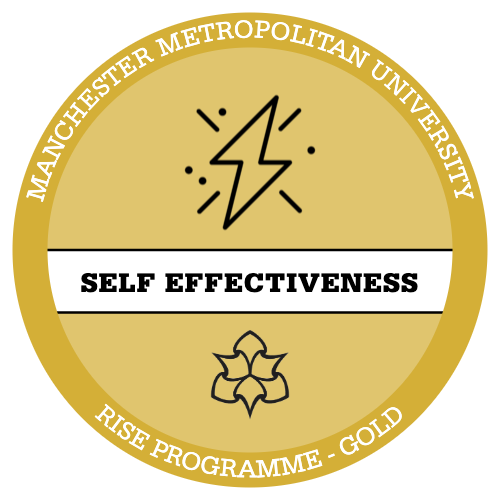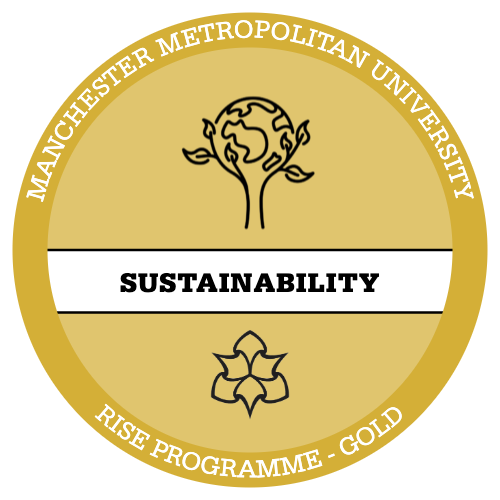Week 2: Watch this Green Space
Get Thinking!
Week 2 is all about ideas! It is a space to throw out any idea no matter how ambitious, practical, realistic, or creative it might be. You can asses these factors at a later stage of the process.
Sharing and discussing ideas is a key part of project and group work. Being able to communicate your ideas in a clear and concise manner is difficult so it’s a skill worth practicing. Also be aware that others may not be as adept or confident with this so take the time to listen to others and foster a positive group dynamic.
The following activities take you through several steps that will help you share all your different thoughts and ideas and ultimately settle on one idea to take forward.
This process will involve lots of discussion and critical reflection on your teams thoughts and ideas. Be patient, listen to others and when providing feedback ensure it is constructive and provides a positive contribution to moving your group forward.

How might we?
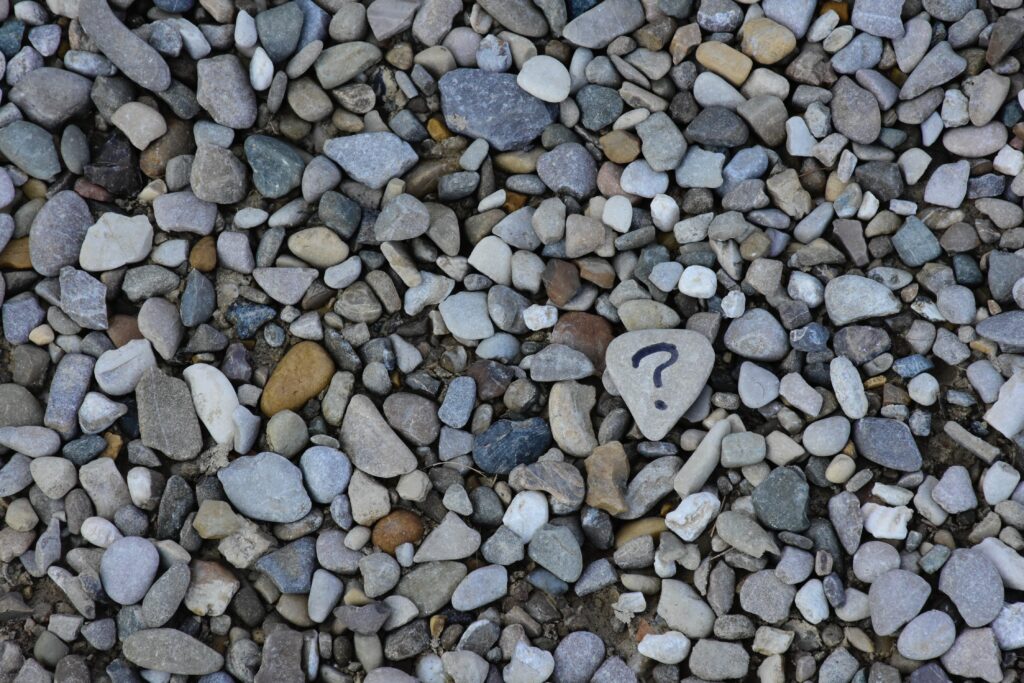
A nice way to get some ideas flowing is to start with a question! You can frame these questions as How Might We…?
These questions allow you to start moving from problems to solutions. For example in your research you may have identified a key issues with urban environments is a lack of biodiversity.
To start working towards a solution to this problem you might say “How might we encourage biodiversity in urban green spaces?”
This is quite vague and broad so you could get more specific and say “How might we encourage biodiversity in All Saints Park on the Manchester Met campus?”
Then finally: “How might we encourage pollinator biodiversity in All Saints Park on the Manchester Met campus?”
Now have a go yourself with the task below!

Apply Your Thinking:
Create your own How Might We Questions?
Following the guidelines above create your own “how might we…?” questions. You should spend around 10 minutes creating as many questions as possible, no suggestion is too silly! Then select three questions as a team and narrow them down following the process outlined above!
Green Space Idea 8’s
Now let’s answer those “How might we questions…”
This activity asks you to generate lots of ideas quickly. Approaching idea generation in this way encourages creative thinking and moving beyond your first thoughts, which is often the least creative.

Apply Your Thinking:
Idea 8s
- For each of your three “How might we questions…” create a 8 boxes. You can draw these or fold a piece of paper to create 8 boxes. Each member of your team should do this so everyone has three grids to fill in. See the template below this box.
- Now everyone will have two minutes to come up with eight ideas for how they might solve each “How might we…?” question. That’s 30 seconds per idea.
- To keep track of time find a timer or stopwatch, you will probably have one on your phone or laptop. When everyone is ready start the stopwatch and fill in your grid with eight ideas in two minutes.
- When the timer runs out repeat the steps above for your other two How might we…? questions. Everyone in your team should now have lots of ideas on how might we solve your project challenge.
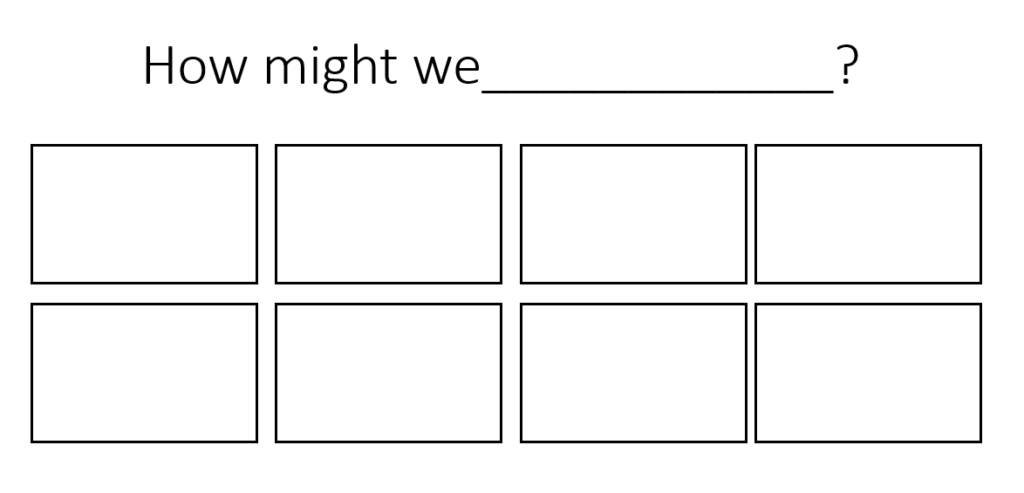
Park your idea
Now you have many different potential solutions it is time to start narrowing these down as we converge on a specific plan of action. The first step of this is to pick the idea we think are the most promising! This can be tricky as letting go of ideas can be a challenge. One tactic for letting go is to think of your idea as like your car. You all may drive into the same car park, but if you’re all going to arrive at your destination together, sometimes you need to park your own car and get into someone else’s.

This doesn’t mean that there’s anything wrong with your car. Your car is great! It’s the perfect car for you. It just so happens that there is another car taking everyone to where you need to go.
Using this tactic you should now pick one of your ideas from your ideas 8s exercise!

Share and Collaborate:
Pick an idea!
- Individually each member of your team should pick one idea from their idea 8s exercise and share it with the group. You may wish to use the T bar model to communicate your favourite idea (see the note below on how to use a T-bar model).
- Collect all the group’s ideas into a single list.
- After you have all shared your ideas each team member should vote on their favourite.
- After voting pick the idea that has the highest number of votes to go forward!

Note:
The T-bar diagram displayed below is a way for you to put your idea into a format that is easy to summarise and communicate. Being able to communicate your ideas is as important as coming up with ideas in the first place. Start by drawing a quick sketch of your idea in the sketch space – this can be as rough and ready as you like. Then provide a brief description of your idea, this might be just a few bullet points or short sentences that quickly convey your idea. Finally thick of a catchy title to write at the top.

Now you should have an ideas to address the problem brief set out by this project. Don’t worry this isn’t set in stone! You can tweak the idea as you progress and make any changes. Also make sure to keep hold of your list of runner-up ideas – never throw a good idea away!
Week 2 – What’s next?
After this session you should…
Explore your idea: Think about how you might develop this idea and scope out what it might look when it becomes a reality.
Research your idea: Has anything similar been done elsewhere? Can you learn anything from existing case studies?
Be flexible: Remember your idea isn’t fixed yet. If you feel your first idea isn’t going to work for whatever reason you can return to your “idea park” and choose a different one
Arrange a meeting: Plan to meet at least one before the next session to work on your idea.
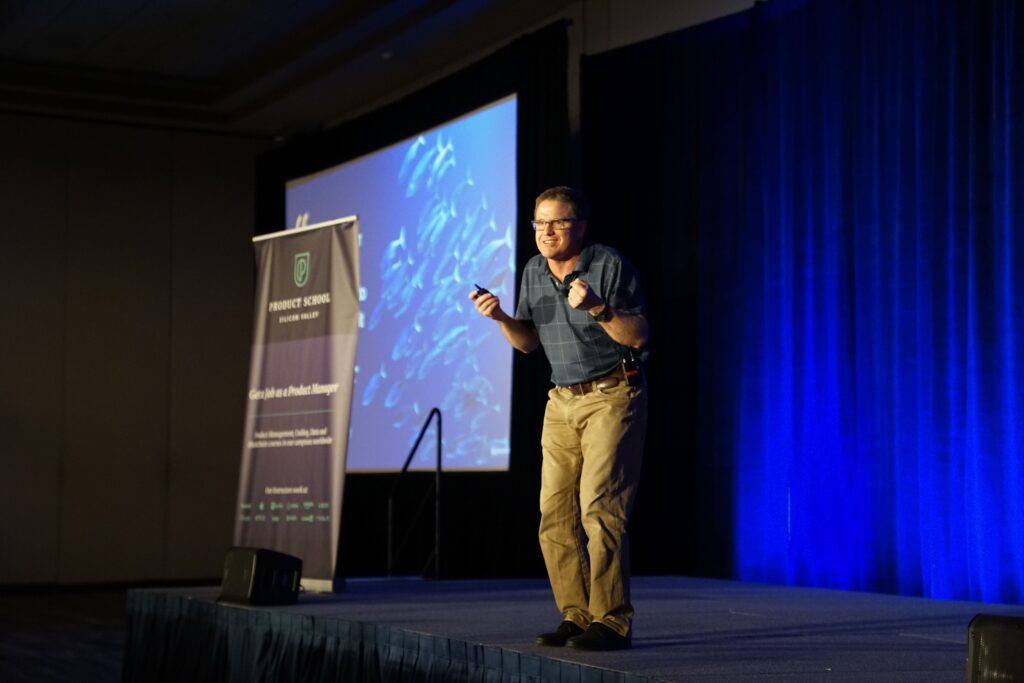
Before the next session you should…
Consider your idea in a real world context. Can you visit a relevant place or community that would be impacted by your idea? Are there any online spaces or examples you can explore? Do similar ideas already exist in these places? Try to envision the change you want to make.
Finalise your idea: Discuss your idea as a group and make sure everyone is on the same page.
Plan a pitch: At the start of the next session you will give a flash presentation of your idea. This is a very short presentation of only two or three minutes where you will communicate your idea. The next section of this pack provides more detail on this along with some resources to help you plan.

